Caryn’s Thoughts
 As any photographer knows, half the battle is being in the right place at the right time. Everyone loves a great photograph, especially the ones that capture something that isn’t often seen. Being in the right place at the right time is crucial, because some events don’t happen very often…especially in front of people. That is exactly where my daughter, Amy Schulenberg Royce found herself recently. While walking on the beach near her Ferndale, Washington home, Amy commonly sees seagulls in flight. The Puget Sound is a prime feeding ground for seagulls, so they are everywhere.
As any photographer knows, half the battle is being in the right place at the right time. Everyone loves a great photograph, especially the ones that capture something that isn’t often seen. Being in the right place at the right time is crucial, because some events don’t happen very often…especially in front of people. That is exactly where my daughter, Amy Schulenberg Royce found herself recently. While walking on the beach near her Ferndale, Washington home, Amy commonly sees seagulls in flight. The Puget Sound is a prime feeding ground for seagulls, so they are everywhere.
 Amy loves to walk along the beach, view the sunsets, and listen to the sounds of harbor life. The horns of the ferry boats, the gulls squawking, the waves splashing onto the shore, and the people out enjoying themselves. It was during one of these peaceful walks that a seagull flew in close to shore. Amy took a picture with her iPhone and then realized that this gull had a starfish in it beak. As he landed, she scrambled to take more pictures, but he didn’t stay long. When she looked at her pictures, she realized that the first picture…the one where she had no idea that the gull had a starfish, was the perfect photo capture. What an exciting moment that was for her. It wasn’t planned, it wasn’t staged, it was just perfectly right…all by itself, with no help from anyone. All she had to do was snap.
Amy loves to walk along the beach, view the sunsets, and listen to the sounds of harbor life. The horns of the ferry boats, the gulls squawking, the waves splashing onto the shore, and the people out enjoying themselves. It was during one of these peaceful walks that a seagull flew in close to shore. Amy took a picture with her iPhone and then realized that this gull had a starfish in it beak. As he landed, she scrambled to take more pictures, but he didn’t stay long. When she looked at her pictures, she realized that the first picture…the one where she had no idea that the gull had a starfish, was the perfect photo capture. What an exciting moment that was for her. It wasn’t planned, it wasn’t staged, it was just perfectly right…all by itself, with no help from anyone. All she had to do was snap.

I’ve looked at lots of photographs taken by lots of photographers, professional and amateur alike, and while planned shots are great, it is the shot that was pure chance that sticks in your memory files. The one where a seagull looks right at you, because he can’t figure out what that human, with a camera on its face, is exactly. Or as in Amy’s case, the picture you took when you didn’t know what you had…yet. Those are great, because they are such a nice surprise. It may be a really long time before Amy finds herself in the right place at the right time to see a seagull successfully capture a starfish, or it could happen again tomorrow…if she finds herself in the right place at the right time again.
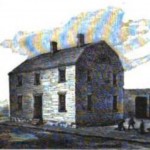 These days there are so many public schools in the United States, that they have become something we give little thought to. That was not always the case, however. As people moved West to populate this great nation, many mothers had to homeschool their children. Eventually, schools began to spring up across the prairie, but what about the schools back East. This nation didn’t always have schools. Things had to be established first. And considering the fact that America was discovered in 1492, it would seem to me that the schools were a bit behind the times. The first public school in the United States, was established on this day, April 23, 1635, in Boston, Massachusetts. The school was called the Boston Latin School. At the time the school was formed, English was not the only language spoken in the United States, so learning Latin, which was considered to be the root of European language, was also a priority, as it was with grammar schools in
These days there are so many public schools in the United States, that they have become something we give little thought to. That was not always the case, however. As people moved West to populate this great nation, many mothers had to homeschool their children. Eventually, schools began to spring up across the prairie, but what about the schools back East. This nation didn’t always have schools. Things had to be established first. And considering the fact that America was discovered in 1492, it would seem to me that the schools were a bit behind the times. The first public school in the United States, was established on this day, April 23, 1635, in Boston, Massachusetts. The school was called the Boston Latin School. At the time the school was formed, English was not the only language spoken in the United States, so learning Latin, which was considered to be the root of European language, was also a priority, as it was with grammar schools in 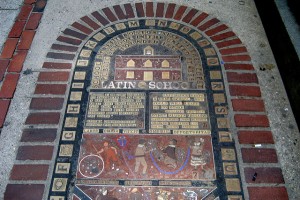 England. Seventeenth-century schoolboys throughout Europe, Catholic or Protestant, learned Latin, and which explains the focus of Boston Latin.
England. Seventeenth-century schoolboys throughout Europe, Catholic or Protestant, learned Latin, and which explains the focus of Boston Latin.
One of the main reasons for education, as far as the Puritans were concerned, was to be able to read the Bible. One of the main reasons for the pilgrimage to the new world was religious freedom, and they felt like it was essential that their students be schooled in the important languages, so they could read the Bible and other important books for themselves. Boston Latin School has prided itself on the number of its students who attended Harvard, or some of the other prestigious four year college.
 When I think of the first school in the United States, and the history thereof, I think of my Aunt Bertha Schumacher Hallgren. She mentioned in her journal that in writing a family history, the author should mention things that are interesting about the times the people in the family lived in. She also had a type of love-hate relationship with school. As a young girl, all she really wanted to do was to stay at home with her mother, but she also understood the importance of a good education, for without it she would not have been able to get the jobs she was able to get, which were good jobs, especially for a woman at that time in history. Whether we enjoy school or not, it is a gateway to almost every opportunity there is, and in the United States, it started with Boston Latin School.
When I think of the first school in the United States, and the history thereof, I think of my Aunt Bertha Schumacher Hallgren. She mentioned in her journal that in writing a family history, the author should mention things that are interesting about the times the people in the family lived in. She also had a type of love-hate relationship with school. As a young girl, all she really wanted to do was to stay at home with her mother, but she also understood the importance of a good education, for without it she would not have been able to get the jobs she was able to get, which were good jobs, especially for a woman at that time in history. Whether we enjoy school or not, it is a gateway to almost every opportunity there is, and in the United States, it started with Boston Latin School.
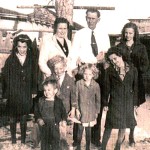
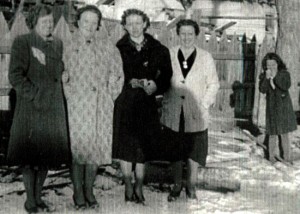 Whenever I think of my Aunt Deloris Byer Johnson, I can’t help by see her smiling face. Aunt Dee was the inventive one in my mothers family. She had a way of creating fun. If she was around, her siblings knew that things were about to get crazy. She might decide to see if a couple of kids could really fly in the wind with a big trench coat on, or she might decide to teach everyone to dance. With Aunt Dee, there was never a dull moment.
Whenever I think of my Aunt Deloris Byer Johnson, I can’t help by see her smiling face. Aunt Dee was the inventive one in my mothers family. She had a way of creating fun. If she was around, her siblings knew that things were about to get crazy. She might decide to see if a couple of kids could really fly in the wind with a big trench coat on, or she might decide to teach everyone to dance. With Aunt Dee, there was never a dull moment.
Aunt Dee was always filled with anticipation about the next step in life…even if it was just the next day. She always expected something amazing to happen, and if it didn’t, she figured out a way to make something happen. Aunt Dee wasn’t a troublemaker, just an excited kid, who made things happen in her life…fun things, and the beneficiaries of her playful spirit. My mom, Collene Byer Spencer, used to tell me about all the fun things the kids did with her sister’s help. They were memories of her sister, that my mom treasured all her life. Mom and Aunt Dee were always close. They shared a joy for life that somehow kept them young at heart.
When Aunt Dee got sick, I would have thought that they joy might have been gone, and perhaps it was as time 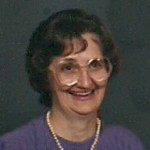
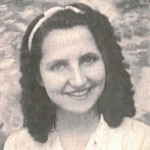 went on, but in the early days of her illness, That sweet smile was still there. Every time I saw her, it was as if she was trying to cheer everyone else up. After her passing, I think that the world seemed a little bit dull, because Aunt Dee’s sweet spirit was not with us any more. She had always been a big part of my life, and I knew that I would always miss her very much. I know that I will see her again in Heaven, and I look forward to seeing her again. Today would have been Aunt Deloris’ 85th birthday. Happy birthday in Heaven Aunt Dee. We all love and miss you very much.
went on, but in the early days of her illness, That sweet smile was still there. Every time I saw her, it was as if she was trying to cheer everyone else up. After her passing, I think that the world seemed a little bit dull, because Aunt Dee’s sweet spirit was not with us any more. She had always been a big part of my life, and I knew that I would always miss her very much. I know that I will see her again in Heaven, and I look forward to seeing her again. Today would have been Aunt Deloris’ 85th birthday. Happy birthday in Heaven Aunt Dee. We all love and miss you very much.
 We have all heard of the World’s Fair, and I think most of us know about the big push between nations to have it held in their country. After World War II, the United States didn’t get to host the World’s Fair until April 21, 1962. I think that most of us knows of the Seattle Space Needle, and I think that most adults know that it was a part of the World’s Fair, also known as the Century 21 Exposition. The fair ran from April 21, 1962 to October 21, 1962, in Seattle, Washington, of course.
We have all heard of the World’s Fair, and I think most of us know about the big push between nations to have it held in their country. After World War II, the United States didn’t get to host the World’s Fair until April 21, 1962. I think that most of us knows of the Seattle Space Needle, and I think that most adults know that it was a part of the World’s Fair, also known as the Century 21 Exposition. The fair ran from April 21, 1962 to October 21, 1962, in Seattle, Washington, of course.
Nearly 10 million people attended the fair in Seattle that year. So many World’s Fairs did not make a profit, but unlike the other world’s fairs of that era, Century 21 did make a profit. After the expedition, Seattle  was left with a fairground and many public buildings and public works. It really revitalized Seattle’s economic and cultural life. The Space Needle was built there, of course, and the Alweg monorail, as well as several sports venues…Washington State Coliseum, now Key Arena and performing arts buildings…the Playhouse, now the Cornish Playhouse. Many of these have been remodeled or replaced now, but the whole area started around the World’s Fair. The Space Needle was built to withstand wind speeds of 200 mph, double the requirements in the building code of 1962. An earthquake registering 6.8 on the Richter scale jolted the Needle enough in 2001 for water to slosh out of the toilets in the restrooms. The Space Needle will not sustain serious
was left with a fairground and many public buildings and public works. It really revitalized Seattle’s economic and cultural life. The Space Needle was built there, of course, and the Alweg monorail, as well as several sports venues…Washington State Coliseum, now Key Arena and performing arts buildings…the Playhouse, now the Cornish Playhouse. Many of these have been remodeled or replaced now, but the whole area started around the World’s Fair. The Space Needle was built to withstand wind speeds of 200 mph, double the requirements in the building code of 1962. An earthquake registering 6.8 on the Richter scale jolted the Needle enough in 2001 for water to slosh out of the toilets in the restrooms. The Space Needle will not sustain serious  structural damage during earthquakes of magnitudes below 9. I think it is an amazing structure.
structural damage during earthquakes of magnitudes below 9. I think it is an amazing structure.
Since my daughter, Amy Royce and her family have moved to northern Washington, we have had the opportunity to visit the area and the Space Needle. I had been there before, but my husband, Bob had not. It doesn’t matter how many times you go up in the Space Needle, because each time is spectacular. The view is amazing, and since you can walk all the way around it, you have a different view on each side. The area is beautiful to be sure. I don’t know how often Amy and her family will get down there, now that they have moved to the Bellingham/Ferndale area, but I don’t think I would live that close without taking a trip to see a little bit of history once in a while.
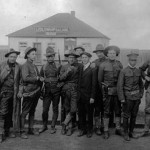 When strikes occur, emotions can get out of control. Sometimes, tensions get so high that they hit the breaking point, and people die. The year was 1914. The date was April 20th. The place was Ludlow, Colorado, and things were about to get out of control. The strike began the previous September, when about 11,000 miners in southern Colorado went on strike against the powerful Colorado Fuel and Iron Corporation. They were protesting low pay, dangerous working conditions, and the company’s autocratic dominance over the workers’ lives. The company was owned by the Rockefeller family and Standard Oil. They responded to the strike by immediately evicting the miners and their families from company-owned housing, which were basically shacks. The United Mine Workers stepped in to help. The miners moved with their families to canvas tent colonies scattered around the nearby hills and the strike continued.
When strikes occur, emotions can get out of control. Sometimes, tensions get so high that they hit the breaking point, and people die. The year was 1914. The date was April 20th. The place was Ludlow, Colorado, and things were about to get out of control. The strike began the previous September, when about 11,000 miners in southern Colorado went on strike against the powerful Colorado Fuel and Iron Corporation. They were protesting low pay, dangerous working conditions, and the company’s autocratic dominance over the workers’ lives. The company was owned by the Rockefeller family and Standard Oil. They responded to the strike by immediately evicting the miners and their families from company-owned housing, which were basically shacks. The United Mine Workers stepped in to help. The miners moved with their families to canvas tent colonies scattered around the nearby hills and the strike continued.
The company had depended on the evictions to end the strike, but when that failed, they hired private detectives to attack the tent colonies with rifles and Gatling guns. The miners fought back and several were killed. The company began to realize that the strikers were determined so Colorado Fuel and Iron Corporation contacted the governor of Colorado, who authorized the use of the National Guard, provided they agree to pay their wages. The strikers mistakenly thought that the governor has sent the National Guard to protect them, but that couldn’t have been further from the truth. The National Guard was under orders to stop the strike…no matter what the cost might be. The National Guard attacked the strikers on April 20, 1914. Two companies of guardsmen attacked the largest tent colony of strikers near the town of Ludlow, home to about 1,000 men, women, and children. The attack began in the morning with a barrage of bullets fired into the tents. The miners shot back with pistols and rifles.
A strike leader was killed while trying to negotiate a truce, and the strikers, fearing that the attacks might intensify. They tried to placed the women and children in pits they had dug beneath the tents. At sunset, the 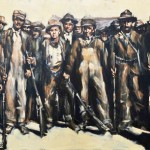 guardsman moved down from the hills and set the tent colony on fire with torches, shooting at the families as they fled into the hills. It wasn’t until the next morning that they discovered the true carnage of their attack. A telephone linesman discovered a pit under one of the tents filled with the burned remains of 11 children and 2 women. The Ludlow Massacre outraged many Americans, nevertheless, the tragedy did little to help the Colorado miners and their families. Federal troops were sent to assure the end of the strike, and the strike failed to achieve any significant improvement in their wages and working conditions. Sixty-six men, women, and children died during the strike, but not a single militiaman or private detective was charged with any crime. Sometimes, the worst injustice comes from the very people who are supposed to protect us.
guardsman moved down from the hills and set the tent colony on fire with torches, shooting at the families as they fled into the hills. It wasn’t until the next morning that they discovered the true carnage of their attack. A telephone linesman discovered a pit under one of the tents filled with the burned remains of 11 children and 2 women. The Ludlow Massacre outraged many Americans, nevertheless, the tragedy did little to help the Colorado miners and their families. Federal troops were sent to assure the end of the strike, and the strike failed to achieve any significant improvement in their wages and working conditions. Sixty-six men, women, and children died during the strike, but not a single militiaman or private detective was charged with any crime. Sometimes, the worst injustice comes from the very people who are supposed to protect us.
 Running for exercise has not always been as common an occurrence as it is these days. Before machinery, cars, and other modern conveniences, people walked to many of the places they went, and so the thought of specifically walking or running to get exercise was pretty foreign. Nevertheless, there were races, and sporting events, so it wasn’t unheard of to run or walk for exercise. Most people have heard of the Boston Marathon…especially after the bombing that took place there April 15, 2013. The marathon has been a runners biggest goal since its first event, held on April 19, 1897. The marathon was an event that came from the dream of Boston Athletic Association member and inaugural US Olympic team manager, John Graham, who was inspired by the marathon at the first modern Olympic Games in Athens in 1896. He immediately set out to bring the race home to the United States. Graham enlisted the help of Herbert H Holton, a Boston businessman. They considered various routes, before a measured distance of 24.5 miles from the Irvington Oval in Boston to Metcalf’s Mill in Ashland was eventually selected.
Running for exercise has not always been as common an occurrence as it is these days. Before machinery, cars, and other modern conveniences, people walked to many of the places they went, and so the thought of specifically walking or running to get exercise was pretty foreign. Nevertheless, there were races, and sporting events, so it wasn’t unheard of to run or walk for exercise. Most people have heard of the Boston Marathon…especially after the bombing that took place there April 15, 2013. The marathon has been a runners biggest goal since its first event, held on April 19, 1897. The marathon was an event that came from the dream of Boston Athletic Association member and inaugural US Olympic team manager, John Graham, who was inspired by the marathon at the first modern Olympic Games in Athens in 1896. He immediately set out to bring the race home to the United States. Graham enlisted the help of Herbert H Holton, a Boston businessman. They considered various routes, before a measured distance of 24.5 miles from the Irvington Oval in Boston to Metcalf’s Mill in Ashland was eventually selected.
Fifteen runners started that first race, but only ten would finish. The winner was John J McDermott, who finished with a time of 2 hours, 55 minutes, and 10 seconds. McDermott was sponsored by the Pastime Athletic Club of New York City. He took the lead from Harvard athlete, Dick Grant over the hills in Newton. He did walk several times during the final miles, but still won by a comfortable margin of 6 minutes and 52 seconds. He had only won one other marathon in the United States…the previous October in New York City.
As most people know, a marathon is normally 26.2 miles, and the original Boston Marathon was only 24.5. That was changed in 1908 so that it would be in compliance with the rules of a marathon. The marathon was originally held on Patriot’s Day, April 19, a holiday that commemorates the beginning of the Revolutionary War. When Patriot’s Day fell on Sunday, the race was held the following Monday. Then when Patriot’s Day was made a Monday holiday in 1969, the Boston Marathon moved with it, and it has been that way since that time.
Originally, women were not allowed to run in the Boston Marathon, which made a lot of women angry. That rule finally changed in 1972, but not without a few missteps first. In 1966, Roberta “Bobbi” Gibb decided to fight the system. She became the first woman to run the entire Boston Marathon, but had to hide in the bushes near the start until the race began. In 1967, Kathrine Switzer, who had registered as “K. V. Switzer”, was the first woman to run with a race number. Switzer finished even though officials tried to physically remove her from the race after she was identified as a woman. In the fall of 1971, the Amateur Athletics Union permitted  its sanctioned marathons, including Boston, to allow women to enter. Nina Kuscsik became the first official female participant to win the Boston Marathon in 1972. Seven other women started and finished that race. In 1975, the Boston Marathon became the first major marathon to include a wheelchair division competition, which Bob Hall won in 2 hours, 58 minutes.
its sanctioned marathons, including Boston, to allow women to enter. Nina Kuscsik became the first official female participant to win the Boston Marathon in 1972. Seven other women started and finished that race. In 1975, the Boston Marathon became the first major marathon to include a wheelchair division competition, which Bob Hall won in 2 hours, 58 minutes.
Exercise has become a regular part of the lives of many people these days, whether they walk, run, bicycle, or some other form of exercise. While I can’t imagine myself running in a marathon…or any other race, I could see myself walking such a distance. Once you get started with exercise, it can become very addictive, and that’s ok too.
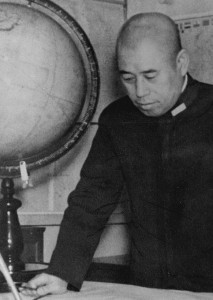 Some soldiers, no matter what side they are on or what branch of service they are in, are so good at what they do, that they become a must kill to the enemy. Admiral Isoroku Yamamoto was just such a soldier. Yamamoto held several important posts in the Imperial Japanese Navy, and undertook many of its changes and reorganizations, especially its development of naval aviation. He was the commander-in-chief during the early years of the Pacific War and so was responsible for major battles such as Pearl Harbor and Midway. That meant that the Unites States had a score to settle with the admiral. Nevertheless, this would be no easy task. The Japanese codes were difficult to break, and so locating the admiral at a time when they could be prepared to shoot him down was not going to be easy.
Some soldiers, no matter what side they are on or what branch of service they are in, are so good at what they do, that they become a must kill to the enemy. Admiral Isoroku Yamamoto was just such a soldier. Yamamoto held several important posts in the Imperial Japanese Navy, and undertook many of its changes and reorganizations, especially its development of naval aviation. He was the commander-in-chief during the early years of the Pacific War and so was responsible for major battles such as Pearl Harbor and Midway. That meant that the Unites States had a score to settle with the admiral. Nevertheless, this would be no easy task. The Japanese codes were difficult to break, and so locating the admiral at a time when they could be prepared to shoot him down was not going to be easy.
Finally, on April 18, 1943, the code breakers successfully broke the code, leaving the admiral vulnerable to attack, and Operation Vengence was born. The sole purpose of this mission was to kill Admiral Isoroku Yamamoto. The mission took place during the Solomon Islands campaign in the Pacific Theater of World War II. The code breakers found out that the admiral was set to be onboard a transport plane that would be flying over Bougainville Island. With everything finally in place, his transport bomber aircraft was shot down by United States Army Air Forces fighter aircraft operating from Kukum Field on Guadalcanal. It was a day to celebrate. The United States had been nursing a black eye where Pearl Harbor was concerned, and they had been looking to settle the score. Operation Vengence was the victory they had been waiting for.
The admiral’s death was a major blow to Japanese 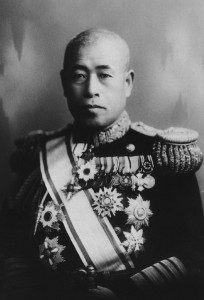 military morale during World War II, and was a major boost to the Allied Forces. The operation was intended as revenge for the Pearl Harbor attack which initiated the formal state of war between Imperial Japan and the United States.
military morale during World War II, and was a major boost to the Allied Forces. The operation was intended as revenge for the Pearl Harbor attack which initiated the formal state of war between Imperial Japan and the United States.
After the war, there was debate over which of the US fighter pilots involved in the raid deserved the official credit for downing Yamamoto due to conflicting first-hand reports from the participants, and has never been entirely resolved. I suppose that for the pilots it was a big deal, but for the US citizens it wasn’t the pilot that mattered, but rather that the mission had been successful. Americans hate to lose, and we will go after the villan who dared to attack us.
 After her divorce, my sister-in-law, Jennifer Schulenberg Parmely met a man named Brian Cratty. Brian is a pilot and for many years his work was as a pilot for the Life Flight team. Brian and Jennifer are well suited to each other in many ways…such as their work in the medical field. They have spent their lives meeting the medical needs of others, but in very different ways. Jennifer as an Obstetrics nurse, and Brian as a Life Flight pilot. Brian has since retired from his job as a Life Flight pilot, and now is a private pilot, who still flies for others occasionally.
After her divorce, my sister-in-law, Jennifer Schulenberg Parmely met a man named Brian Cratty. Brian is a pilot and for many years his work was as a pilot for the Life Flight team. Brian and Jennifer are well suited to each other in many ways…such as their work in the medical field. They have spent their lives meeting the medical needs of others, but in very different ways. Jennifer as an Obstetrics nurse, and Brian as a Life Flight pilot. Brian has since retired from his job as a Life Flight pilot, and now is a private pilot, who still flies for others occasionally.
Brian and Jennifer are really good friends. They both enjoy the same things. They hike, ski, run, and they love to travel. They also spend quite a bit of time at their cabin on Casper Mountain. In fact, the mountain is such a big part of their lives that they had a house built a while back that is in the foothills of Casper Mountain. That way, they can go for a hike before the get going on their day, and they don’t have to go very far to do it. In fact it was the love of hiking that we all share, that placed so many of the right people with me when I fell on the Bridle Trail and broke my shoulder. Each one of those people played their part, and I will be forever grateful. Brian and I also have something else in common…physical therapy. He recently had to have Rotator Cuff surgery done, and was taking  physical therapy too…something that neither of us wanted to have in common…ever, but there it is. I have since been released, and I’m sure he has too, and I hope his shoulder is doing as well as mine is, because the shoulder is more important than we realize sometimes.
physical therapy too…something that neither of us wanted to have in common…ever, but there it is. I have since been released, and I’m sure he has too, and I hope his shoulder is doing as well as mine is, because the shoulder is more important than we realize sometimes.
Brian is rather a quiet man, and tries not to be intrusive on family matters, but I think I speak for everyone, when I say that we all consider him an important part of this family. I suppose that the longer he is in this family, the less an outsider he will feel…or maybe, like many people, he will always be a quiet man. I am often that way, so I can completely relate to it. I think some people are just listeners. Today is Brian’s birthday. Happy birthday Brian!! Have a great day!! We love you!!
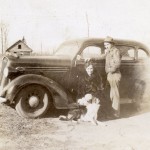
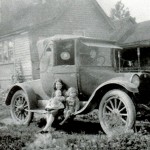 Most cars, these days, have a fairly streamlined design. Much of this is to make them more fuel efficient, and to make the ride less wind resistant, and therefore smoother, I’m sure. It wasn’t always that way, however. For a time, running boards were quite fashionable, and most cars had them. I never could really see the draw to that, because in reality, actually stepping on the running boards, to get into the car, loosens them, and will eventually cause them to need to be reinforced. I suppose my opinion on this comes from my 41 years married to a mechanic, but it is nevertheless, a reality. Many of the cars from my parents’ and in-laws’ era had running boards, especially the pickups, but it is something that is not seen as much these days, and if it is, it is usually something that was added later on, and as I said, not really for use as a way to enter the vehicle, but rather for show.
Most cars, these days, have a fairly streamlined design. Much of this is to make them more fuel efficient, and to make the ride less wind resistant, and therefore smoother, I’m sure. It wasn’t always that way, however. For a time, running boards were quite fashionable, and most cars had them. I never could really see the draw to that, because in reality, actually stepping on the running boards, to get into the car, loosens them, and will eventually cause them to need to be reinforced. I suppose my opinion on this comes from my 41 years married to a mechanic, but it is nevertheless, a reality. Many of the cars from my parents’ and in-laws’ era had running boards, especially the pickups, but it is something that is not seen as much these days, and if it is, it is usually something that was added later on, and as I said, not really for use as a way to enter the vehicle, but rather for show.
Be that as it may, running boards were something that used to be important, so they say, because of the fact that vehicles were higher off the ground back in the day, than they are now. The fashionable running boards of this day and age are pretty narrow, and really aren’t very much like the old ones at all. The old running boards were wide, and could easily be used for a seat, or even to give enough room for an adult to lie down on them. I remember my mom telling me about one of her brothers who used to take an afternoon nap out on the running board of my grandfather’s car. I always thought that was rather comical, but she used to say that her dad always had to walk around the car to make sure there wasn’t a kid on the running board on the other side, before he could leave for wherever he was going.
It also seems that the running boards of a car make a great place to gather the family for pictures, because 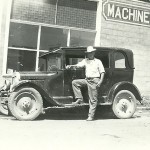
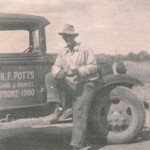 there are pictures of people sitting or standing on the running boards among my family’s pictures, as well as Bob’s family’s pictures. The car seems to have been the backdrop of choice at that time. I suppose it ‘s not so different today. People like their cars, and they are a part of life, with or without running boards, so why not include them in your pictures sometimes…especially if they are a hot car, which I’m sure was the case at the time, even if we wouldn’t think so these days. The look of cars changes from era to era, and while the big clunkers of old, were not the sporty cars of today, they were cool then.
there are pictures of people sitting or standing on the running boards among my family’s pictures, as well as Bob’s family’s pictures. The car seems to have been the backdrop of choice at that time. I suppose it ‘s not so different today. People like their cars, and they are a part of life, with or without running boards, so why not include them in your pictures sometimes…especially if they are a hot car, which I’m sure was the case at the time, even if we wouldn’t think so these days. The look of cars changes from era to era, and while the big clunkers of old, were not the sporty cars of today, they were cool then.
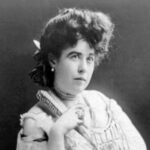 It’s strange…how often society prefers old money to new money. Maybe these days it’s not as common, but in the late 1800s, it was a little bit more common. That was the world Margaret Tobin grew up in. Who is Margaret Tobin, you might ask. Well, we didn’t really remember her as Margaret Tobin, but rather as Molly Brown…or more likely as The Unsinkable Molly Brown. That’s because on this day April 15, 1912, Molly Brown not only survived the sinking of the Titanic, but she heroically saved other people in the water, and kept the people in the lifeboat calm with her stories of life in the west.
It’s strange…how often society prefers old money to new money. Maybe these days it’s not as common, but in the late 1800s, it was a little bit more common. That was the world Margaret Tobin grew up in. Who is Margaret Tobin, you might ask. Well, we didn’t really remember her as Margaret Tobin, but rather as Molly Brown…or more likely as The Unsinkable Molly Brown. That’s because on this day April 15, 1912, Molly Brown not only survived the sinking of the Titanic, but she heroically saved other people in the water, and kept the people in the lifeboat calm with her stories of life in the west.
Molly was born the daughter of an impoverished ditch-digger. As a teenager, Molly went West to join her brother, who was working in the booming silver mining town of Leadville, Colorado. While there, the manager of a local silver mine, James J Brown, noticed her, and they fell in love. The couple married in 1886, and a short time later, James Brown discovered a large deposit of gold. They quickly became very wealthy. They moved to Denver, and tried unsuccessfully to take what should have been their rightful place in society, but the high society of the time…old money, just weren’t prepared to let these unstart, new money people with little social grooming into their ranks. Apparently Molly was a little too flamboyant for the stuffy, old money high society people. She was a little too much for her husband too, because they soon separated, and with her estranged husband’s financial support, Molly was able to live comfortably…for a time anyway…until most of the money ran out.
Molly left Denver and decided to travel. The Eastern elite, didn’t seem to mind Molly’s flamboyance, and soon accepted her as one of them. Socially prominent eastern families like the Astors and Vanderbilts prized her frank western manners and her thrilling stories of frontier life. It was her friendship with these people that brought her to the Titanic, on that fateful trip, but it was Molly herself and her heroic ways that brought her fame, even though 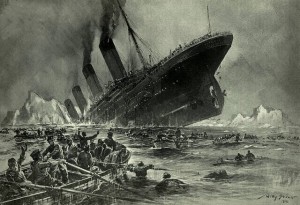 she obviously wasn’t the only woman who survived the sinking. After the ship hit an iceberg and began to sink, Brown was tossed into a lifeboat. She took command of the little boat and helped rescue a drowning sailor and other victims. To keep spirits up, she regaled the anxious survivors with stories of her life in the Old West. One the newspapers heard of her heroics, she gained national fame. She was dubbed “the unsinkable Mrs. Brown” and she became an international heroine. Before very long though, the money ran out, and she faded into obscurity, dying a woman of modest means in New York City in 1932. It was the Broadway musical that would revive her claim to fame, and change her title to The Unsinkable Molly Brown.
she obviously wasn’t the only woman who survived the sinking. After the ship hit an iceberg and began to sink, Brown was tossed into a lifeboat. She took command of the little boat and helped rescue a drowning sailor and other victims. To keep spirits up, she regaled the anxious survivors with stories of her life in the Old West. One the newspapers heard of her heroics, she gained national fame. She was dubbed “the unsinkable Mrs. Brown” and she became an international heroine. Before very long though, the money ran out, and she faded into obscurity, dying a woman of modest means in New York City in 1932. It was the Broadway musical that would revive her claim to fame, and change her title to The Unsinkable Molly Brown.

